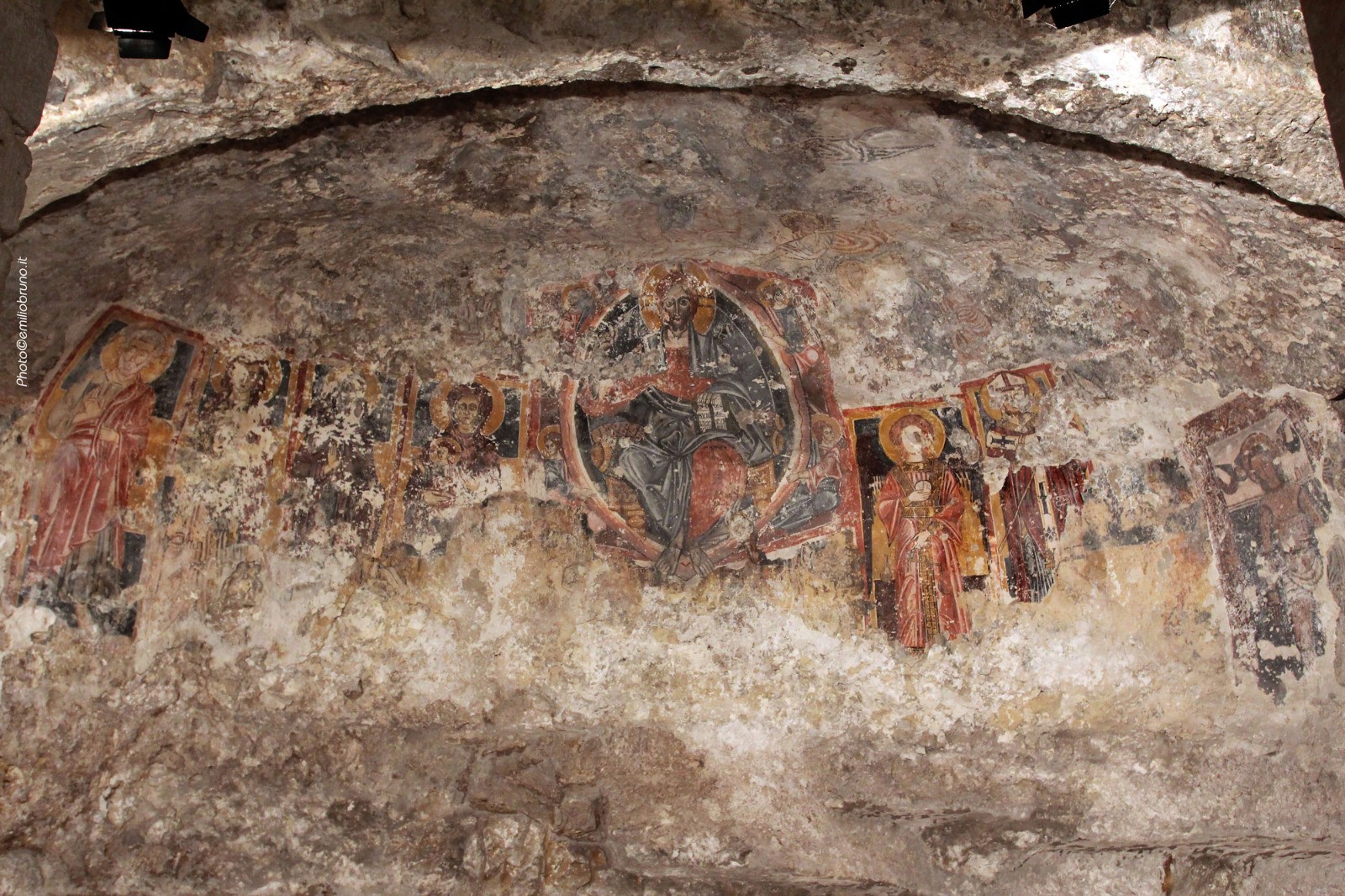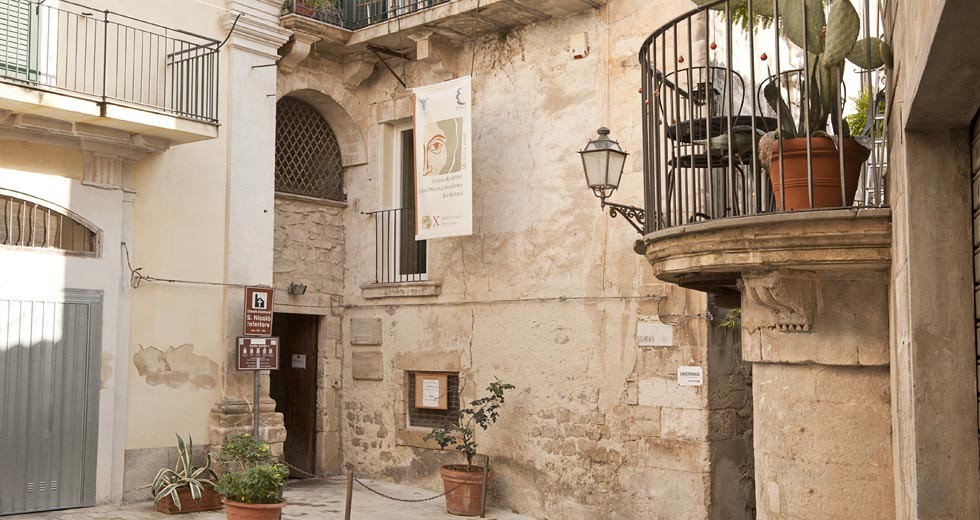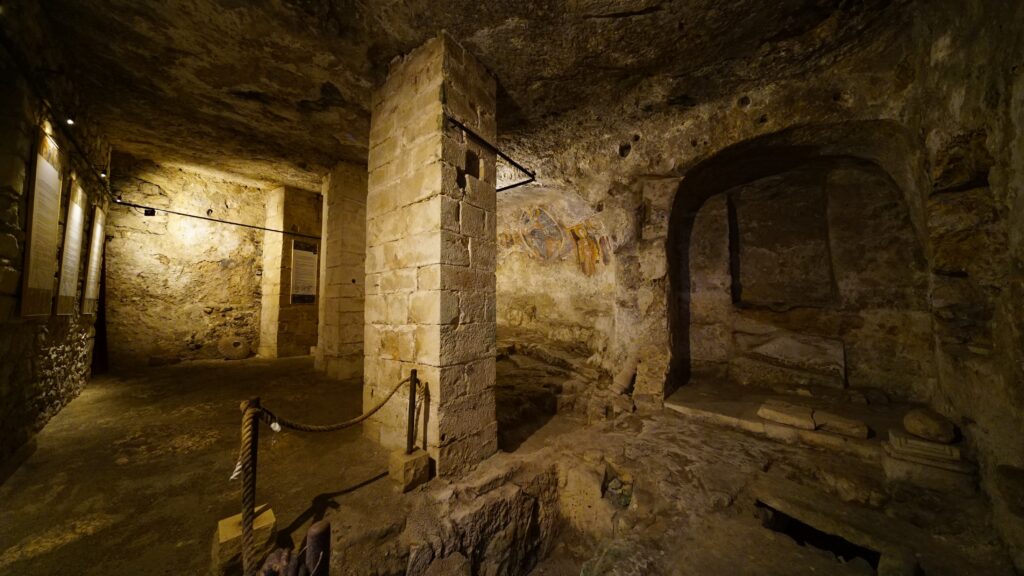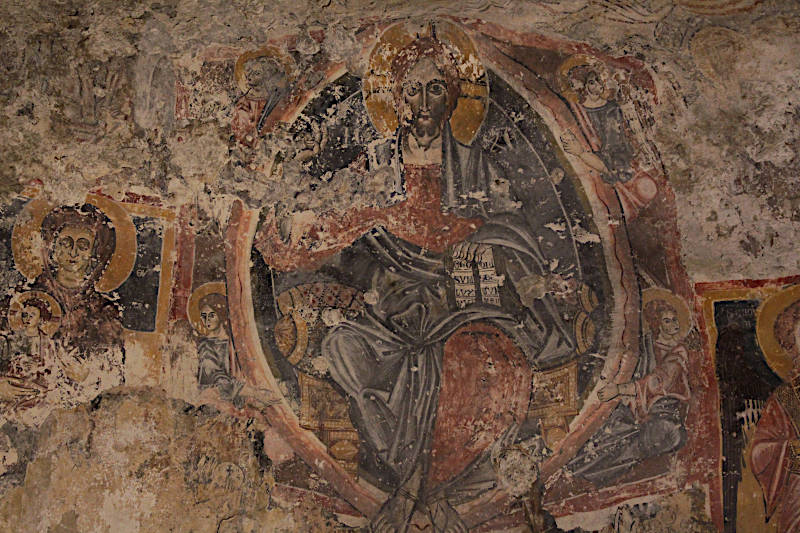
A few steps from the Cathedral of San Pietro, in the historic center, at number 89
of via Grimaldi you can discover the Church of San Nicolò Inferiore which
it represents the most important testimony of rock architecture
modicana. In fact, in past times the Val di Noto was affected by the
phenomenon of rock settlements and consequently of the practiced cult
inside the caves.
This small church, considered the oldest in Modica, was discovered in
1987 by the Modica scholar Duccio Belgiorno in a cave used as a room
clearing and acquired in 1992 by the Study Center on the County of Modica.
The church, albeit penalized by building overlaps and renovations
internal during the nineteenth century, still today it is shown to the visitor throughout the
her beauty. A single room of just 45 square meters is embellished by a
beautiful apse with a hemispherical cap, practically a perfect semicircle,
fully decorated in perfect Byzantine style. In the center it stands out
the image of Christ Pantocrator, seated on the throne and surrounded by angels,
enclosed in a large almond decorated with a continuous red thread.
The altar was probably located in the center of the apse. More
excavation works have also brought to light, at floor level, a
series of earthen tombs, still largely unexplored.
The rock church represents the most eloquent and best example
preserved of a rock architecture of Byzantine origin which he left
important traces not only in the Iblea area but, more widely, throughout the island.
The church of San Nicolò Inferiore was excavated in the soft limestone bank
near the bed of a stream.
It was at the service of a district of Modica that had developed outside the
circuit of the city walls (current historical center of the lower part of the
city), in the direction of the communication routes that connected it to the
it costs.
The ingrowing of the church, due to the collapses, is amputated in the part
so that it is not possible to specify the original depth of the reservoir.
The presence of the iconostasis confirms a type of church of oriental worship.
It is probably the parish church of the Greek-speaking quarter –
Middle Ages of Modica to be attributed to the presence of a small nucleus of
Greek origin who participated in the process of Christianization of the town e
of the territory after the Norman conquest and after the re-foundation in 1093
of the diocese of Syracuse.

This first phase must certainly have been followed by continuous use
of the environment, until the XIV-XV century, as evidenced by the most recent pictorial cycle of the apse which appears quite unitary in the plant and in the
realization. In 1577, due to lack of income, the church of San Nicolò
Inferiore was aggregated to the parish of San Pietro.
During the still later phase, after the earthquake of 1693, he gave up
keep this part excavated in the rock, and it was preferred to build, rather,
a new but smaller brick church known as San Nicolella,
which is currently the masonry, now used as a service room which
obliterates rock excavation.




